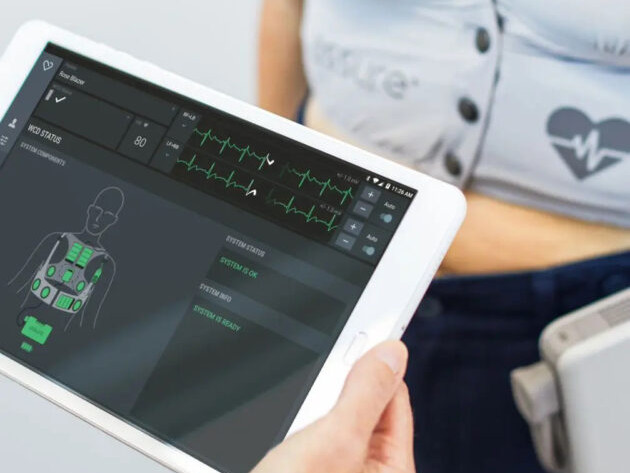Kestra Medical Technologies: Revolutionizing Cardiac Event Detection and Response
Kestra Medical Technologies, a groundbreaking medical device company based in Kirkland, Washington, is making waves in the healthcare industry with its innovative approach to detecting and responding to sudden cardiac events.Recently, the company filed for an initial public offering (IPO), marking a significant milestone in its journey to expand its reach and impact. Kestra specializes in wearable devices designed to monitor and respond to life-threatening cardiac conditions, addressing a critical need in the medical field. With a focus on saving lives, the company has developed cutting-edge technology that combines real-time monitoring, immediate response capabilities, and seamless integration with emergency services.
A Growing Company with a Mission to Save Lives
Founded in 2014, Kestra Medical Technologies has quickly established itself as a leader in the cardiac monitoring and therapeutic device space. The company’s primary focus is on detecting and responding to sudden cardiac arrest (SCA), a condition where the heart suddenly stops beating due to severe irregularities in its electrical activity. SCA is a leading cause of death in the U.S., claiming approximately 475,000 lives annually. Kestra’s wearable device is designed to intervene in these critical moments, potentially saving thousands of lives each year.
The device, which received FDA approval in 2021, is equipped with advanced features that set it apart from traditional cardiac monitors. It not only detects irregular heart activity but can also deliver a defibrillation shock when necessary and alert emergency medical services (EMS) immediately after the shock is administered. This rapid response system is complemented by a remote patient data platform, enabling healthcare providers to monitor patients’ conditions in real time. By combining these technologies, Kestra is addressing a significant gap in cardiac care and improving outcomes for individuals at risk of sudden cardiac arrest.
Financial Growth and Investor Confidence
Kestra Medical Technologies has demonstrated impressive financial growth in recent years, positioning itself as an attractive investment opportunity. In the fiscal year ending in April, the company reported revenue of $27.8 million, a remarkable increase from $7.6 million in 2023. This triple-fold growth reflects the growing adoption of Kestra’s devices and the expanding demand for innovative cardiac monitoring solutions.
Despite its revenue growth, the company has reported net losses, including $94.1 million in the last fiscal year. However, this is not uncommon for early-stage medical device companies, which often invest heavily in research, development, and regulatory approvals. Kestra has raised $496 million in funding from investors, with its most recent funding round securing $196 million in July. This financial backing underscores investor confidence in the company’s technology and its potential to transform the cardiac care landscape.
Leadership and Expertise Behind Kestra’s Success
At the helm of Kestra Medical Technologies is President and CEO Brian Webster, a seasoned executive with over two decades of experience in the medical device industry. Webster previously served as the CEO of Physio-Control, a company specializing in external defibrillators, which was acquired by Stryker for $1.28 billion in 2016. His leadership and expertise have been instrumental in guiding Kestra through critical stages of development, including securing FDA approval and scaling its operations.
Under Webster’s leadership, Kestra has assembled a team of experts in medical technology, engineering, and healthcare, ensuring that the company remains at the forefront of innovation. The company’s strong leadership and deep industry knowledge have positioned it as a trusted partner for both patients and healthcare providers, further solidifying its reputation in the market.
Kestra’s IPO and the Resurgence of Tech IPOs
Kestra’s decision to go public marks a significant turning point not only for the company but also for the broader tech industry. The IPO filing comes after a prolonged period of limited traditional IPO activity in the Seattle area, with the last major tech IPO being Sana Biotechnology’s debut in 2021. While some companies have opted for alternative routes, such as special purpose acquisition companies (SPACs), Kestra’s move signals a resurgence of interest in traditional IPOs, particularly within the life sciences and technology sectors.
Analysts predict that the number of companies going public will continue to rise in 2025, driven by improving economic conditions and increased investor confidence. Kestra’s IPO, led by prominent financial institutions such as Bank of America, Goldman Sachs, and Piper Sandler, is expected to capitalize on this trend. The company plans to trade on the Nasdaq Global Market under the ticker symbol KMTS, further enhancing its visibility and access to capital.
The Future of Cardiac Care and Kestra’s Role in It
As Kestra Medical Technologies prepares for its IPO, the company is well-positioned to make a lasting impact on the future of cardiac care. With its wearable device already approved by the FDA and a growing user base, Kestra is poised to revolutionize the way sudden cardiac events are detected and managed. The company’s focus on












